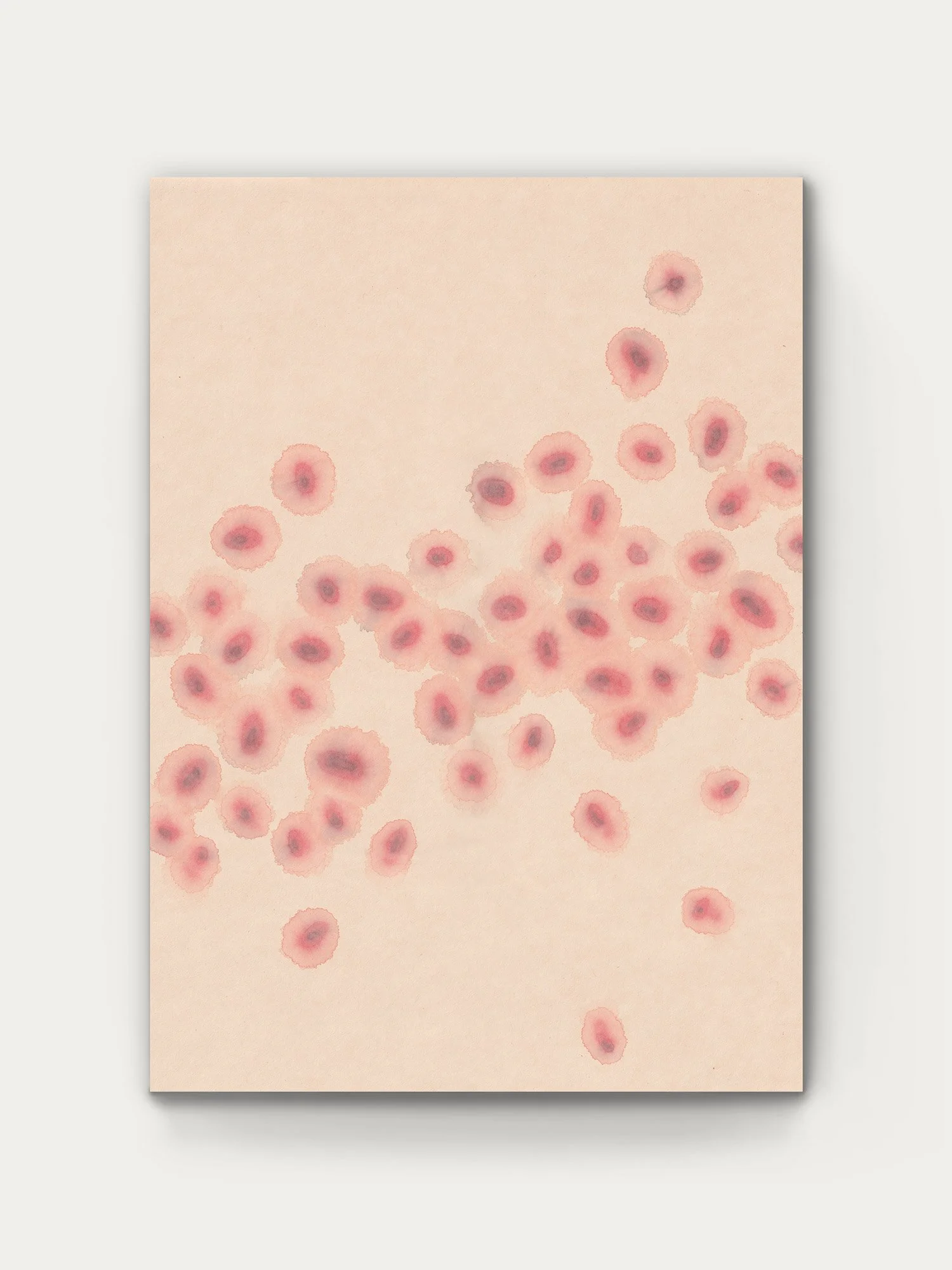The Symbolic Meaning of the Color Red
Red is an active, self-assured color — directly associated with strength, energy, passion, and, just as strongly, with danger.
–
Mixing English red earth pigments with Nikawa
>
How We Perceive Red
We see red when light with wavelengths above 600 nm reaches our retina. Most mammals can hardly perceive this range. Even the bull — contrary to popular belief — sees the world only in grayscale and reacts solely to movement, not to color.
Humans, however, are extremely sensitive to red, which is why it is used so widely in warning signs, alarms, and signals.
Magenta — the Base of Many Reds
In four-color printing, magenta functions as the pure base for red. Only through mixing does the full spectrum of red tones emerge:
Mixed with yellow:
blood red, signal red, vermilion — the warm, classic reds.Mixed with cyan (blue):
pink, fuchsia, purple, red-violet.Lightened with white:
rose, blush, salmon, dusty pink, all pale reds.Darkened with black:
bordeaux, rust, garnet, and other deep, heavy reds.
A single base pigment produces an extraordinary variety of shades — from bright and vivid to dark, atmospheric, and intense.
+
detail from Uluru | Contemplation N°78
Floating Cinnabar | Breath Meditation N°60
[
The Vital Power of Blood
Red is tied to emotion and life force like no other color. Its symbolism across cultures is shaped by two universal experiences: blood and fire.
Red expresses love, vitality, activity, fertility, health — but also anger, aggression, danger, and raw intensity. It is frequently used to strengthen or stimulate depleted energy.
It increases metabolic activity and strongly affects the autonomic nervous system. Studies show that simply seeing the color red can raise the human metabolic rate measurably — along with determination, presence, and emotional awareness.
From “Masculine Red” to “Feminine Pink”
Because of its association with fire, force, and aggression, the red planet Mars was linked to the god of war in antiquity. Red was considered a masculine color, while pink — the “little red” — was intended for boys. In contrast, blue — associated with the Virgin Mary — inspired the use of “little blue” for girls.
It was only around the 1920s that these associations shifted. Blue uniforms, workwear, and the fashionable sailor look contributed to a reversal: light blue became masculine, while pink became feminine.
Regardless of cultural shifts, red remains a universal symbol of eroticism, sensuality, and sexuality — whether in private spaces or the unmistakable glow of the red-light district.
/
Vermilion | Contemplation N°71
The Luck of the Chinese
In China, red is one of the most widely used and culturally powerful colors. It symbolizes joy, summer, the south, and the element of fire. Traditionally, it drives away evil spirits and attracts prosperity and good fortune.
Brides wear red wedding dresses, and when a child is born, neighbors offer red eggs — symbols of luck and well-being.
The Color of Power
In the West, red has long been linked to wealth, rank, and authority — especially purple, one of the most expensive colors ever produced and historically reserved for religious and secular leaders.
Thousands of murex snails had to be collected and processed, and only sunlight transformed the dye into its vivid, luxurious tone. Later, scarlet and kermes red extended this symbolism.
Only in the late Middle Ages were nobles — and eventually wealthy citizens — allowed to wear red garments.
Over time, the political meaning shifted dramatically. Those who opposed traditional power structures often claimed the color symbolically — sometimes even in their names (Red Army, Khmer Rouge).
Today, red is widely associated with socialist, labor, and revolutionary movements.
:
Curious about other Colors? (coming soon)
> White
> Yellow
> Orange
> Purple
> Blue
> Turquoise
> Green
> Brown
> Black
> Gray
> Silver
> Gold




